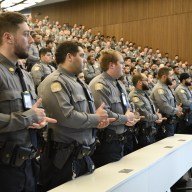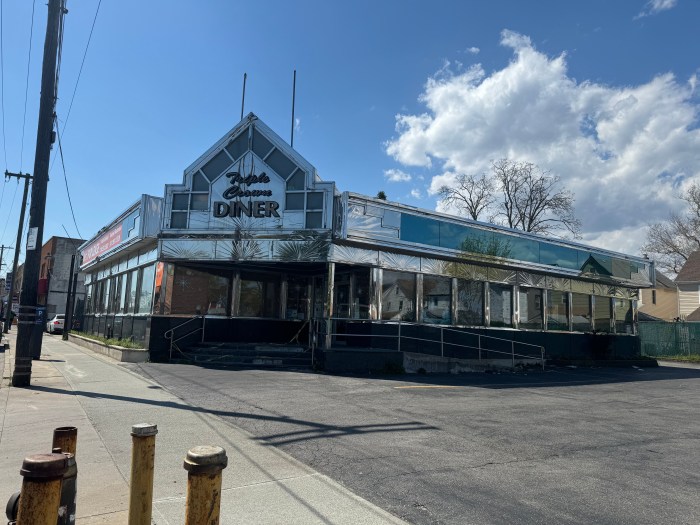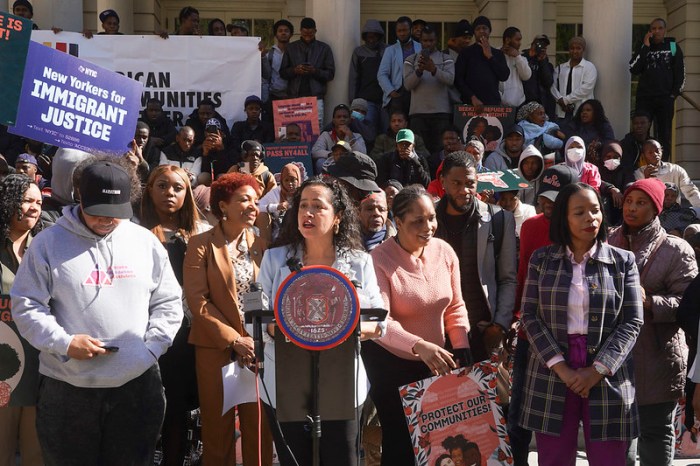Will End Service In Oct.; Pols Upset
Several elected officials were upset that funding to continue operation of the temporary Rockaway ferry past October was not included in this year’s expense budget, they said last Thursday, June 26.

Queens Borough President Melinda Katz, Assemblyman Phil Goldfeder and State Sen. Joseph Addabbo each issued statements expressing their disappointment the ferry operated by Seastreak was not included in the Fiscal Year 2015 budget. They stated it has become a vital transportation link for the peninsula.
Katz further said she will seek “a mid-year budget modification that would provide funding that would guarantee that the Rockaway ferry remains in operation after its current funding runs out in October.”
The temporary ferry sails out of Beach 108th Street and Beach Channel Drive, making stops at the Brooklyn Army Terminal, Wall Street and 34th Street on the east side of Manhattan.
Katz had requested $8 million from the budget be allocated to run the ferry seven days a week through the end of 2015. She also wants the ferry made permanent, and asked the city to include baseline funds in the budget’s projections for coming years.
With bus and subway options limited in Rockaway, the ferry provides a vital link to the rest of the city for residents, Katz said. As noted, Queens has the only intraborough toll bridge in the city, as drivers are charged to use the Cross Bay Bridge between Broad Channel and the Rockaway Peninsula.
“The temporary Rockaway ferry now in operation has been a great boon for Rockaway residents seeking an easy commute to other parts of the city and for people from other parts of the city seeking to get to Rockaway Beach and its attractions,” Katz said in a statement. “In the short time since it was established during the immediate aftermath of Superstorm Sandy, the temporary Rockaway ferry has proved enormously popular and has contributed to the peninsula’s economic growth and to its attractiveness as a tourist destination.”
Her statement included that Manhattan has six active commuter ferry terminals, while Brooklyn has seven. She believes this is an unequal distribution. Only two express buses operate to the peninsula, she added.
“I never argue to limit anyone’s access to ferry service, but I believe Queens needs equity,” she said.
Addabbo and Goldfeder were also critical of the decision.
“I believe in a budget of $75 billion, the city can find money needed to keep the ferry afloat permanently,” Addabbo said. “We must come together and advocate for the ferry service and show the mayor what an asset it is to our community and everyday lives.”
“I am severely disappointed in Mayor de Blasio and the Economic Development Corporation for ignoring the transit needs of southern Queens and Rockaway families.” Goldfeder said. “Like every other borough in the city, we deserve an affordable, efficient and reliable means of transportation. The ferry has been a lifeline for our families and small businesses after the devastation caused by Sandy and it must remain permanent.”
Transportation activist Phil McManus held a rally on Saturday, June 28 in Rockaway Beach to protest the ferry not being included in the budget and “to bring together likeminded people to fight for the ferry,” he said.
He feels the decision is a part of the continuation of Rockaway getting the short end in many ways.
“I think to a certain degree Rockaway has been ignored,” he said.
“We have longer and unnecessary travel times,” McManus said at the protest. “Why does Staten Island have a free Ferry and Queens and Brooklyn do not? We need this ferry for faster transportation to school and work, bring new visitors and money, unite and bring our city closer together and to provide emergency access to communities in case of another crisis.”
































